When I look at DC’s Pride Month specials each year, I can’t help but marvel at all the characters and their stories. This got me thinking about the road it took to get here. Before DC had enough LGBTQIA+ characters to fill an anthology, who were the heroes who took those first steps? The ones who walked so that today’s queer characters could run? If you’re a longtime reader, you’ll likely remember some of these moments…but perhaps not all. As is often the way with representation, it began largely at the periphery, and many of these characters aren’t very well known today. Still, they broke down barriers and helped make the DC Universe into a more inclusive space, and for that, they’re worth celebrating. They’re worth discovering. So, on this first day of Pride Month, let’s take a look back at six important LGBTQIA+ milestones within the DCU.
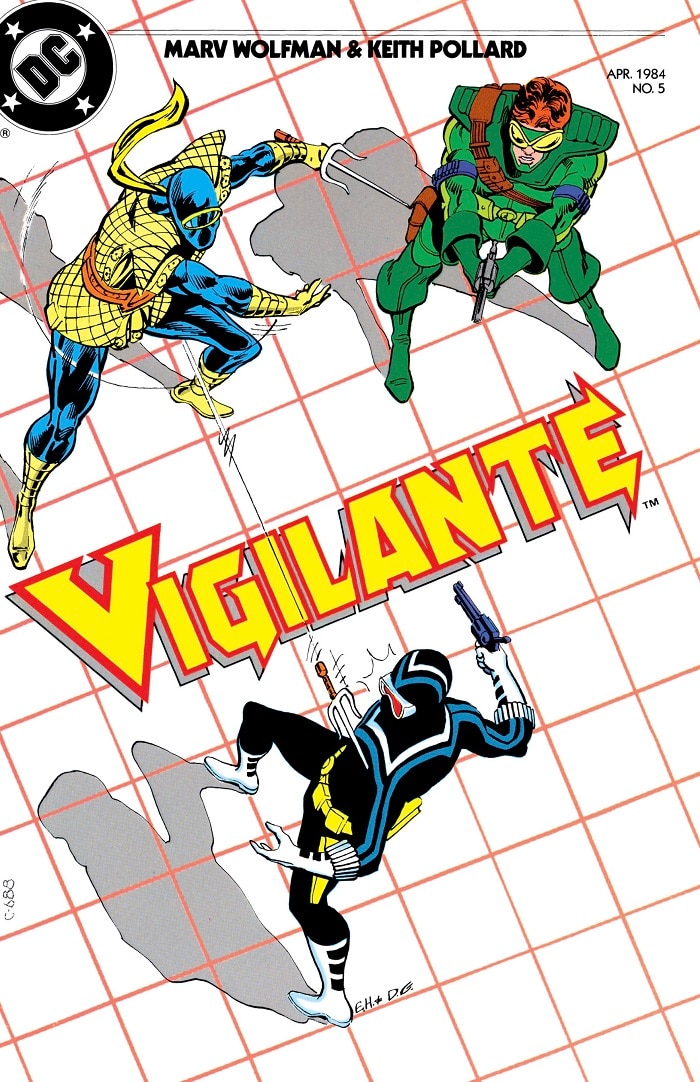
1984: Cannon and Saber become DC’s first gay couple
In 1984’s Vigilante #5, Adrian Chase fought two costumed criminals named Cannon and Saber. While the outlaw duo may not be Legion of Doom material, they’re notable for being the first gay couple in the DC Universe. Although the script wasn’t allowed to be explicit, the nature of Cannon and Saber’s partnership was clear. They may not have been able to take down the Vigilante, but they were able to break down barriers when it came to same-sex couples in the DC Universe.
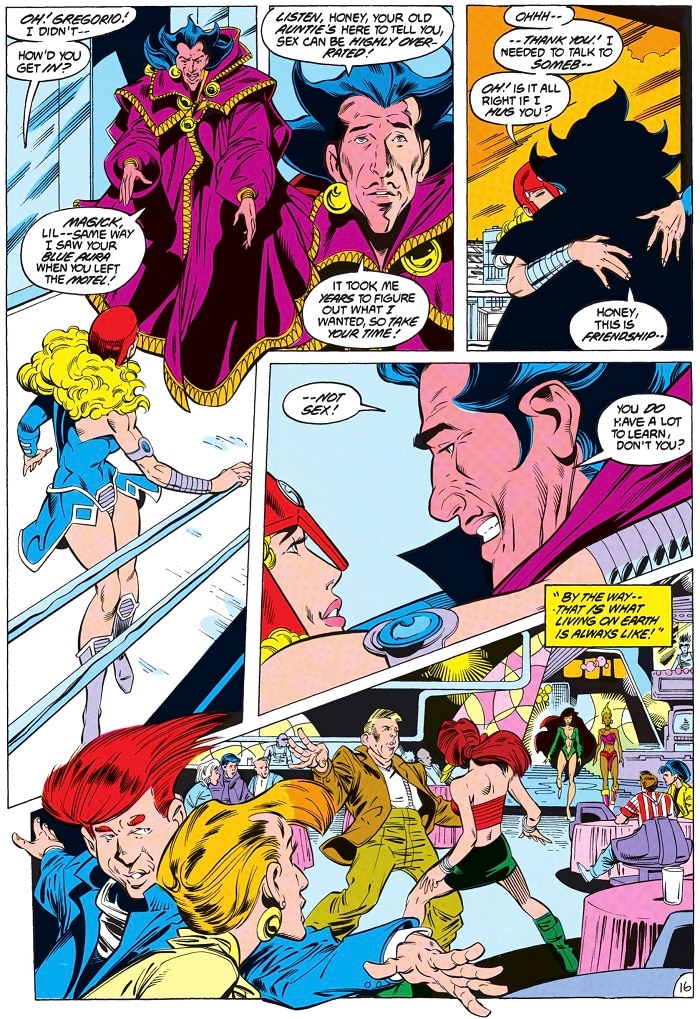
1988: Introducing Extraño, DC’s first gay superhero
In Millennium #2, the world was introduced to Extraño, DC’s first gay superhero. Taking his name from the Latin word for “strange,” Extraño was a magician who dressed flamboyantly and insisted that his friends refer to him as “Auntie.” He was regularly featured in New Guardians, a title which pushed the envelope at times, even if its attempts at being cutting edge haven’t all aged well. Extraño sadly disappeared when New Guardians was canceled in 1989 until writer Steve Orlando brought him back in 2015. Extraño even made an appearance in DC’s very first Pride special.
For more on Extraño’s legacy, check out this deep dive from my colleague Alex Jaffe.
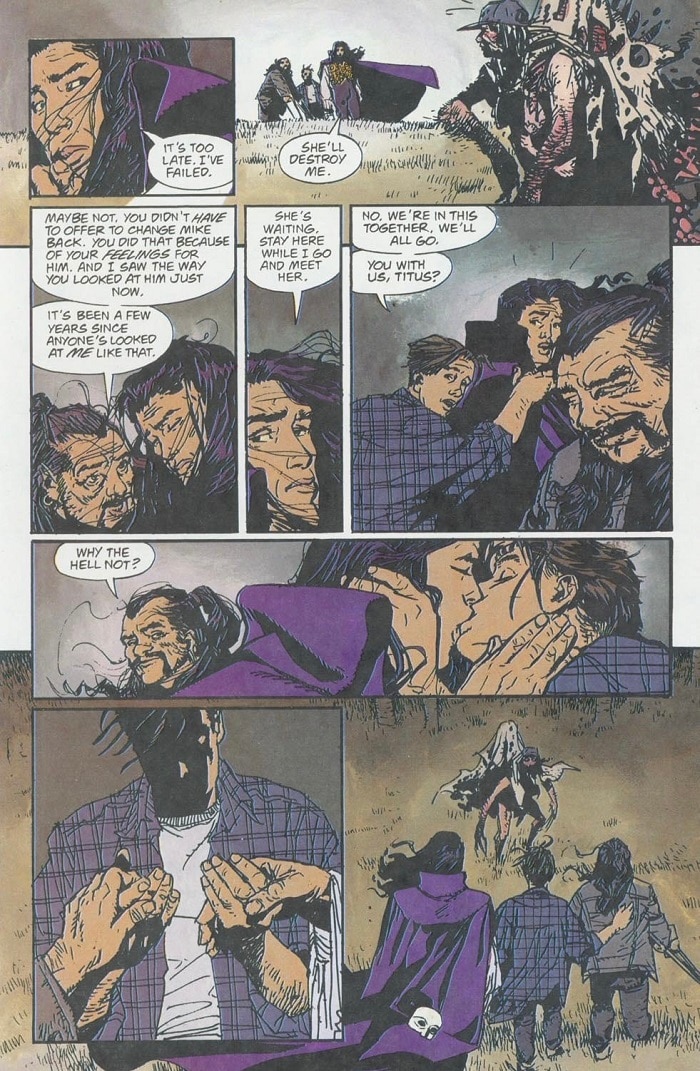
1993: Enigma, the first DC comic series with a gay lead
In 1993, DC launched Vertigo, an imprint that changed the comic book industry. Titles published by Vertigo experimented with storytelling conventions, blended multiple genres and produced some of DC’s greatest masterpieces. One of the first titles Vertigo published was Peter Milligan and Duncan Fegredo’s Enigma, an eight-issue limited series about a telepathic superhero. (While technically queer characters like Alan Scott and John Constantine had their own titles before Enigma, their sexualities wouldn’t be revealed until later.)
Not only was Enigma gay, but his title didn’t shy away from his sexuality. Enigma used his telepathic powers to make a man named Michael Smith fall in love with him. The limited series also featured the first same-sex kiss and gay sex scene in a mainstream comic.
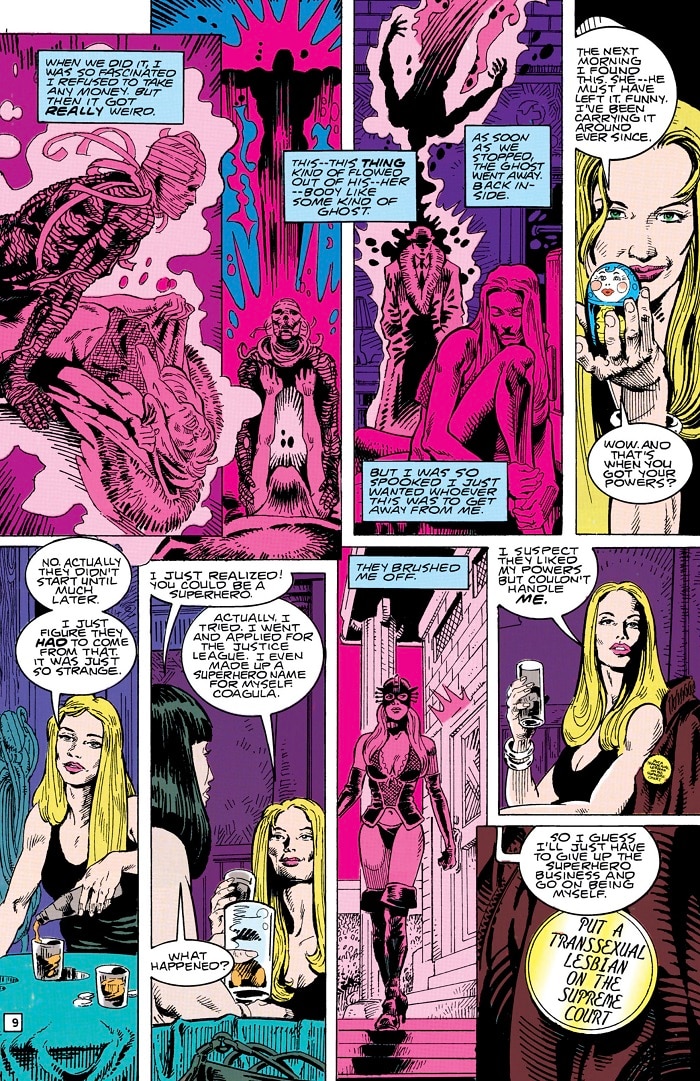
1993: Coagula, DC’s first transgender superhero
Another barrier was broken in Doom Patrol #70, with the introduction of Coagula, DC’s first transgender superhero. After a sexual encounter with the Doom Patrol member Rebis, Kate Godwin discovered that she had the power to change solids into liquids, and liquids into solids. She decided to become a superhero and took on the name Coagula.
She immediately auditioned for the Justice League, who turned her down. (“I suspect they liked my powers, but couldn’t handle me,” Kate said.) She later found a home with the Doom Patrol. During her first appearance, Kate wore a button that read “Put a Transexual Lesbian on the Supreme Court.” Coagula was created by Rachel Pollock, a transgender woman herself who became one of the most influential voices of the Vertigo line.
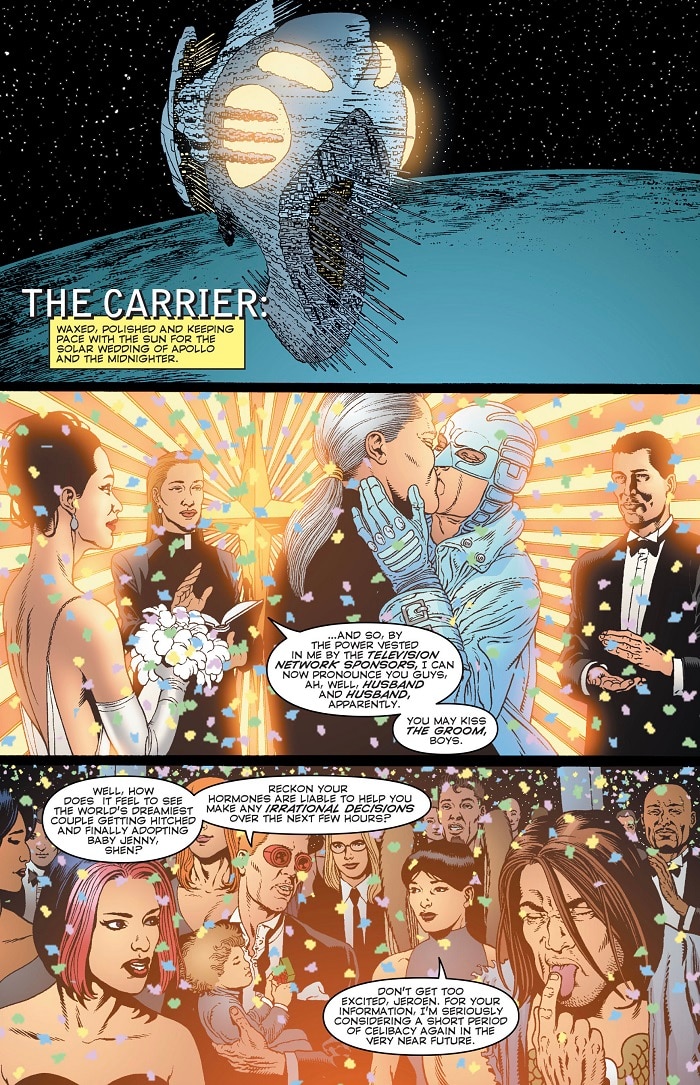
2002: Apollo and Midnighter are the first superheroes to have a gay wedding
Apollo was a solar-powered hero and Midnighter was a vigilante with enhanced abilities. The two heroes were markedly different, but were also hopelessly in love with one another, balancing their relationship with their heroic duties. Apollo and Midnighter were members of the Authority, a superhero team that was part of DC’s WildStorm imprint, and in The Authority #29, the pair finally tied the knot in the first gay wedding to take place within a mainstream superhero comic.
In 2002, gay marriage still wasn’t legal in every US state, making Midnighter and Apollo’s wedding all the more groundbreaking. The issue also has the couple adopt a baby girl named Jenny. Tackling same-sex parenting in the same issue as gay marriage was an extraordinary move, but Apollo and Midnighter have always been an extraordinary couple.
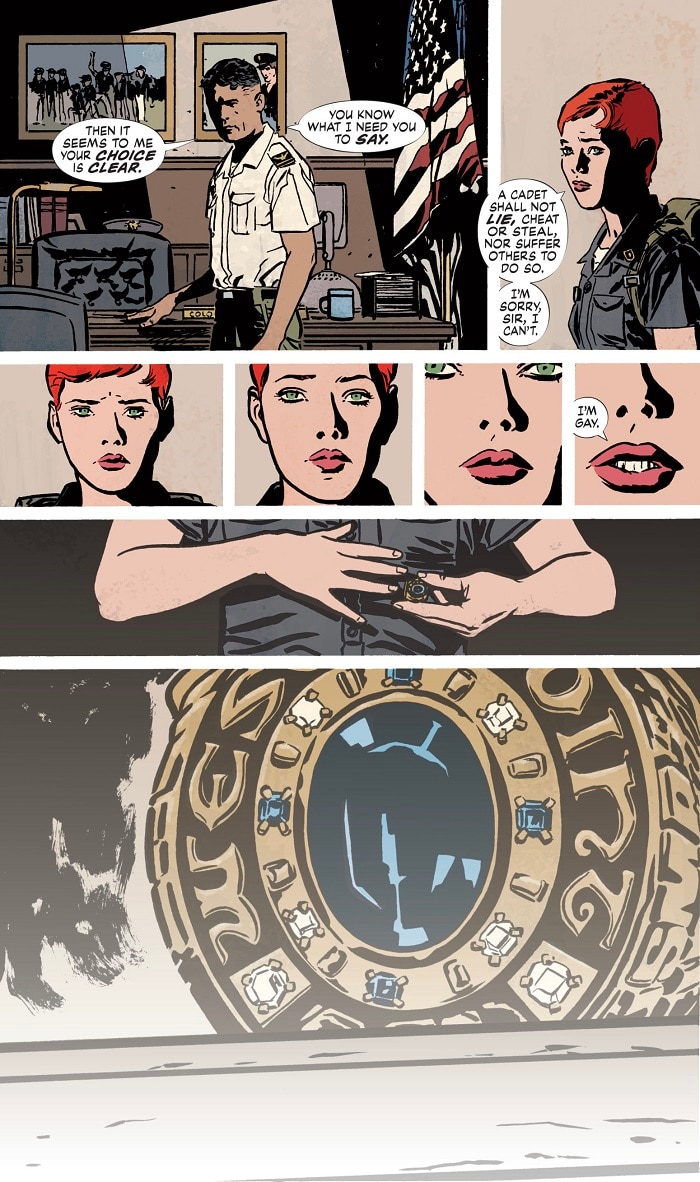
2009: Batwoman becomes the first lesbian superhero to headline a monthly DC comic
In 2009, Batwoman made history when she became the headline character for Detective Comics. Although queer women like Maggie Sawyer had starred in earlier comics such as the limited series Metropolis SCU, Batwoman was the first lesbian superhero to headline an ongoing monthly DC comic book—and it was Detective Comics, one of DC’s oldest and most important titles.
Batwoman took over the title in Detective Comics #854, which kicked off the “Elegy” storyline. This now-iconic Greg Rucka and J.H. Williams III story dealt with “don’t ask, don’t tell,” the controversial policy which forced queer recruits to leave the military if they came out of the closet. Batwoman’s tenure as the title lead proved popular, which resulted in her gaining her own self-titled series in 2011.
We may not see Enigma in the latest DC Pride special, and I wouldn’t expect a comeback any time soon from Cannon and Saber. However, even if those characters are no longer around, their legacy can be seen every month across the DCU. You can see it in Jon Kent and his relationship with Jay Nakamura. You can see it in Harley Quinn and Poison Ivy, whose love for each other is now canon after decades of innuendo and suggestion. You can see it in Dreamer, who became TV’s very first trans superhero on Supergirl before making the leap to the DCU. It’s been a long journey, and there is still more ground to cover, but it’s clear that LGBTQIA+ DC fans are finally starting to see their stories told within the DCU…and the DCU is all the better for it.
DC Pride 2023 #1, featuring characters like Jon Kent, Harley Quinn, Poison Ivy, Dreamer, John Constantine, Tim Drake and more, is now available to read in print and on DC UNIVERSE INFINITE.
Joshua Lapin-Bertone writes about TV, movies and comics for DC.com, is a regular contributor to the Couch Club and writes our monthly Batman column, "Gotham Gazette." Follow him on Twitter at @TBUJosh.
NOTE: The views and opinions expressed in this feature are solely those of Joshua Lapin-Bertone and do not necessarily reflect those of DC Entertainment or Warner Bros., nor should they be read as confirmation or denial of future DC plans.















